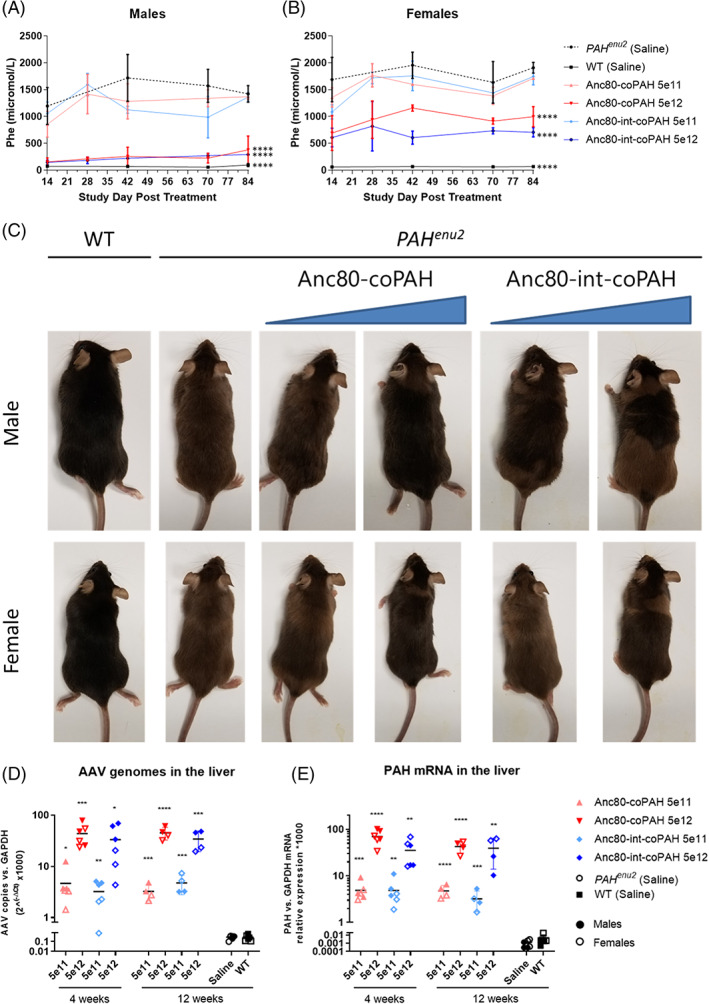FIGURE 3.

Expression of phenylalanine hydroxylase gene (PAH) corrected the phenylketonuria (PKU) phenotype in Pahenu2 mice. The high dose of 5 × 1012 VG/kg Anc80‐coPAH and Anc80‐int‐coPAH was associated with acute and sustained decreases in circulating phenylalanine levels in males, A, and females, B, which approached wt levels in males with both PAH constructs. Only negligible benefit was indicated at the lower dose of 5 × 1011 VG/kg. C, Wild‐type animals (first column) had much darker coat color than untreated Pahenu2 mice (second column), and restored metabolism of phenylalanine caused a phenotypic switch back to darker coat color in treated male (top row) and female (bottom row) mice which was dose‐dependent. D, Adeno‐associated virus (AAV) genomes in the liver relative to glyceraldehyde‐3‐phosphate dehydrogenase (GAPDH) showed similar dose‐dependent increases between the 5 × 1011 VG/kg and 5 × 1012 VG/kg levels. E, PAH mRNA showed corresponding increases between dose levels, with slightly higher transcription with Anc80‐coPAH. In both analyses, results were negligible for wt animals and Pahenu2 mice dosed with saline. One‐way analysis of variance (ANOVA) with multiple comparisons and Dunnett's correction were used to assess statistical significance, P < .05 (*) .01 (**), .001 (***), or .0001 (****)
